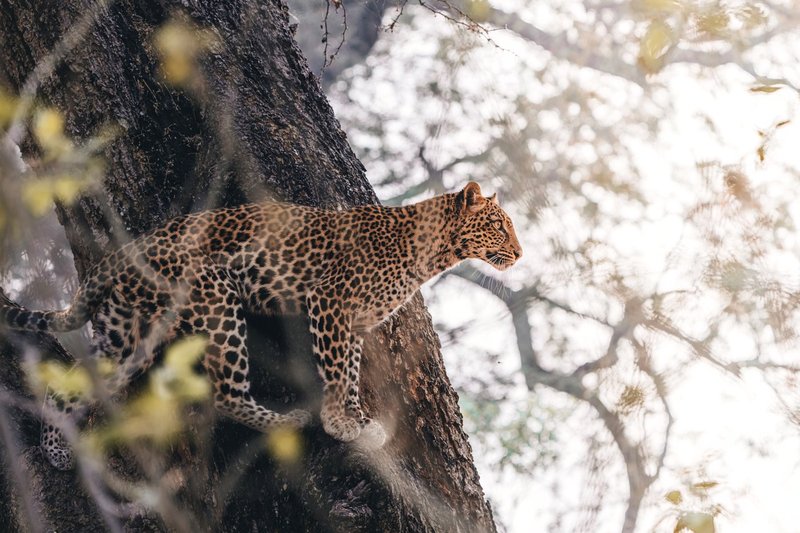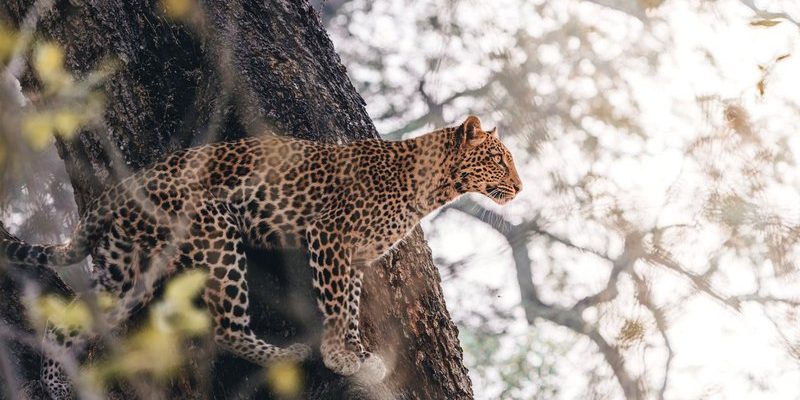
In folklore and mythology, leopards often embody *strength*, *cunning*, and sometimes, even *mystery*. They play roles in everything from cautionary tales to tribal rituals. The way different societies interpret these powerful animals not only reflects their beliefs and values but also paints a vivid picture of our connection to the wild. So let’s explore how the leopard prowls through cultural lore and folklore around the world—its tales woven into the fabric of human storytelling.
The Leopard in African Folklore
In many African cultures, leopards are revered and symbolized in various ways. Often seen as cunning and powerful, they’re depicted in stories that highlight their ability to outsmart prey and rivals alike. One common theme is the leopard’s cleverness, which resonates with the idea of survival and adaptability in the wild.
For instance, in some traditional stories, the leopard is portrayed as a trickster figure—a role that’s commonly seen with other animals like the hare or the tortoise. These tales often convey moral lessons, highlighting the importance of wit over sheer strength. Think of it like a game of chess, where the smartest moves lead to victory. Children are taught these lessons through stories, creating a bond between the leopard and their understanding of life’s challenges.
Moreover, the leopard is often regarded as a guardian spirit in various African tribes. People believe that leopards possess a *mysterious power* that can offer protection or guidance. This deep connection illustrates how integral leopards are to the identity and culture of many African communities, serving as a symbol of both respect and fear.
Symbolism in Asian Cultures
In Asia, leopards carry different meanings depending on the region. In some cultures, they are viewed as symbols of bravery and strength. Take, for instance, the iconic Indian myth where the leopard is often associated with divine qualities or even revered as an animal linked to various deities.
In Hindu culture, leopards are intricately woven into mythology. They are sometimes depicted alongside goddesses, enhancing their portrayal of power and grace. For example, the goddess Durga is often shown riding a tiger, which can also symbolize the leopard’s fierce spirit. This connection elevates the animal’s status while also portraying the balance of nature—fierce yet beautiful.
Interestingly, leopards also appear in Chinese zodiac folklore, symbolizing *courage* and *determination*. They are part of tales that emphasize qualities like resilience and the value of embracing challenges—an encouraging message to many who look to these stories for inspiration.
Leopards in Western Literature
Western literature has a significant ongoing relationship with leopards, often appearing in stories, fables, and even poetry. They are celebrated for their *mystique* and often represent the untamed aspects of nature. Think about how they’ve ben written about in classic works, where they embody power, grace, and sometimes danger.
One famous example is in Edgar Allan Poe’s poem “The Leopard.” In this work, the leopard becomes a metaphor for beauty and the darker sides of nature. The portrayal reflects the tension between humanity’s desire to tame wildness and the fear of the untamed. This duality is something that resonates throughout many Western tales—leopards often embody a warning sign about the dangers lurking just beneath the surface.
Additionally, leopards sometimes serve as characters in fables. Aesop’s Fables features tales where animals represent human traits, and leopards are often portrayed as proud or cunning, teaching readers the importance of humility and integrity. These stories, with their moral lessons, have influenced generations and shaped how we view leopards in our cultural landscape.
Leopards in Art and Popular Culture
Art and popular culture have long used leopards as representations of beauty, elegance, and raw power. From ancient artifacts to modern tattoos, the leopard’s image is captivating and versatile. Artists are drawn to the leopard’s spots and sleek form, finding ways to capture its essence through various mediums.
In fashion, the leopard print has become an enduring symbol of luxury and style, from runway shows to casual wear. Think about how often you see leopard spots in clothing or accessories—there’s just something about it that feels bold and fierce. It seems to whisper, “I dare you to stand out.”
Moreover, leopards have a significant presence in films and literature. They often represent danger or the thrill of the wild—think of the leopard in Disney’s “The Jungle Book” or how they are portrayed in documentaries showcasing their hunting prowess. This portrayal creates a connection between audiences and the wild, highlighting both respect and fascination.
Modern Conservation and Leopard Symbolism
Today, the leopard’s representation in culture also includes themes of conservation and awareness. As habitats diminish and the threat of extinction looms, leopards often become symbols for the fight to protect wildlife. Many organizations use their image to raise awareness about biodiversity and the importance of conserving natural habitats.
In campaigns, leopards represent *resilience* and adaptability, qualities that many strive to embody in the face of change. By highlighting their plight, communities come together to advocate for wildlife preservation, often drawing from cultural stories to inspire collective action.
Furthermore, conserving leopards and their habitats is often portrayed as a moral responsibility. This connection between cultural representation and modern values emphasizes the interplay between folklore and the urgent need for conservation efforts. It shows how stories can empower action—because who wouldn’t want to save a symbol of strength and grace?
From Africa to Asia and beyond, leopards hold a special place in our cultural narratives. They serve as powerful symbols of strength, cunning, and beauty. Their stories, rich with lessons and meaning, continue to inspire us today. Whether as tricksters in folktales or majestic creatures in art, leopards remind us of the wild world beyond our doors.
As we reflect on these narratives, let’s take a moment to appreciate how interconnected we are with nature. The legacy of the leopard invites us to listen closely to the stories that define us and to act for the world we share. So next time you come across a leopard—whether in books, films, or even in the wild—take a moment to ponder the depths of what they represent, not just in culture but in our lives.

